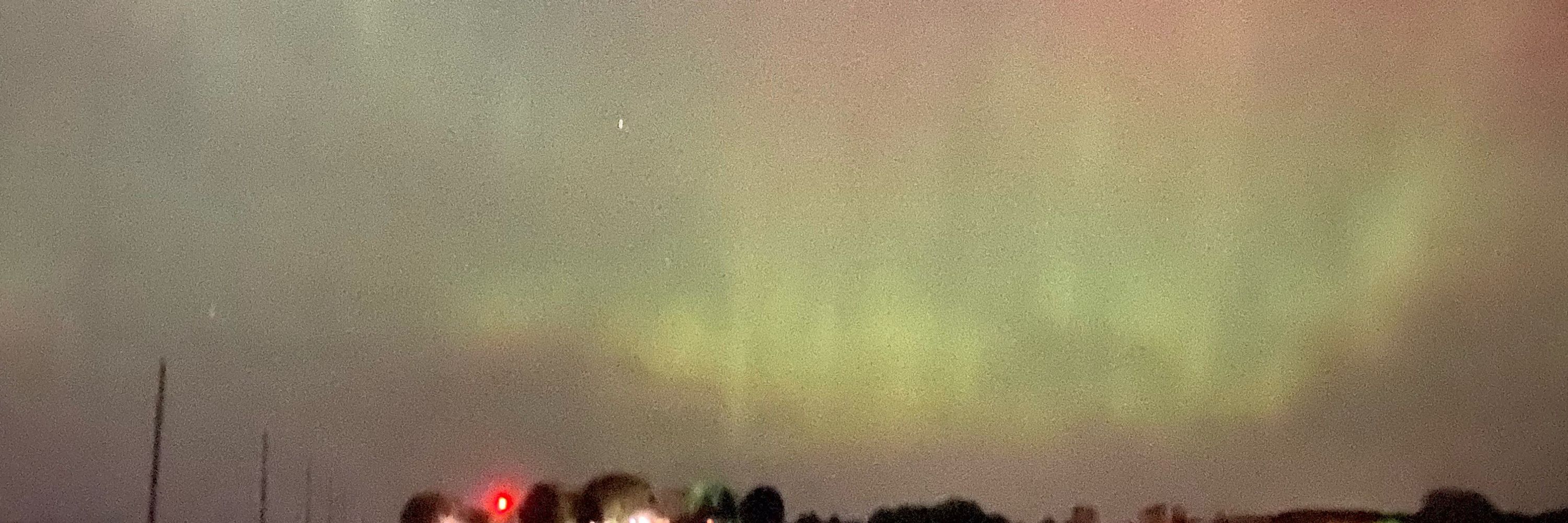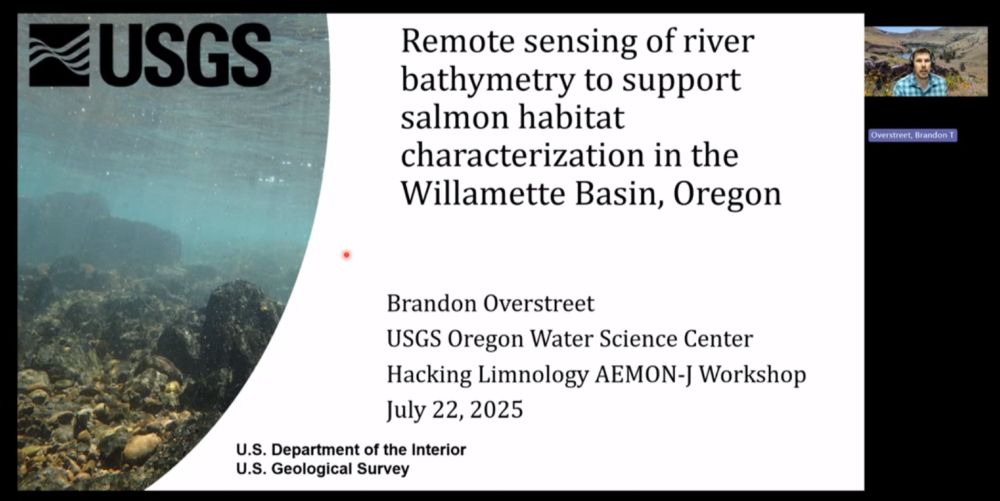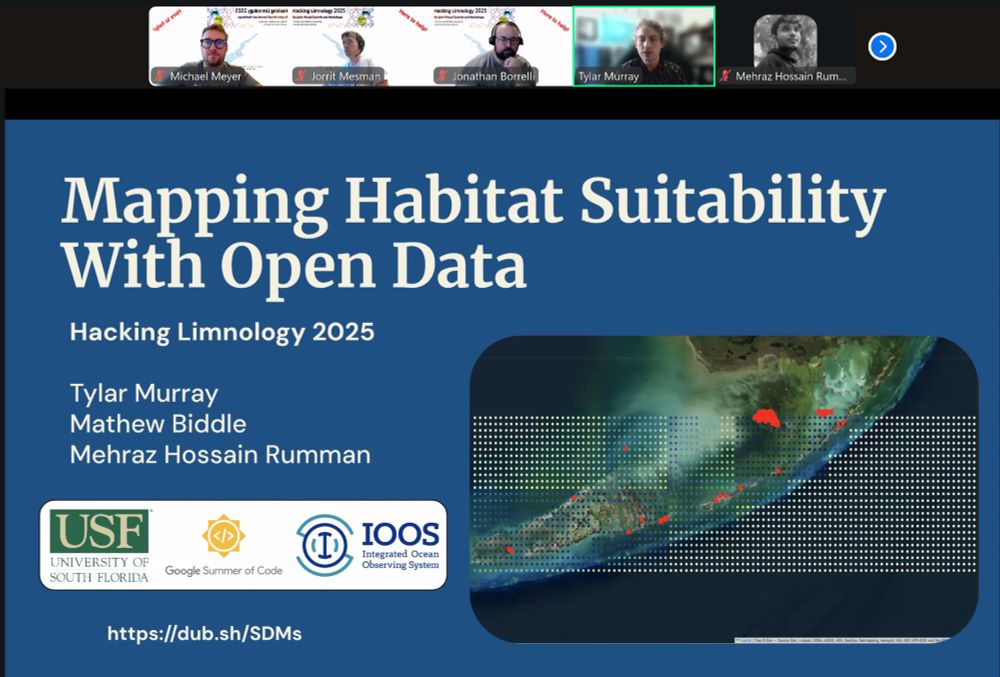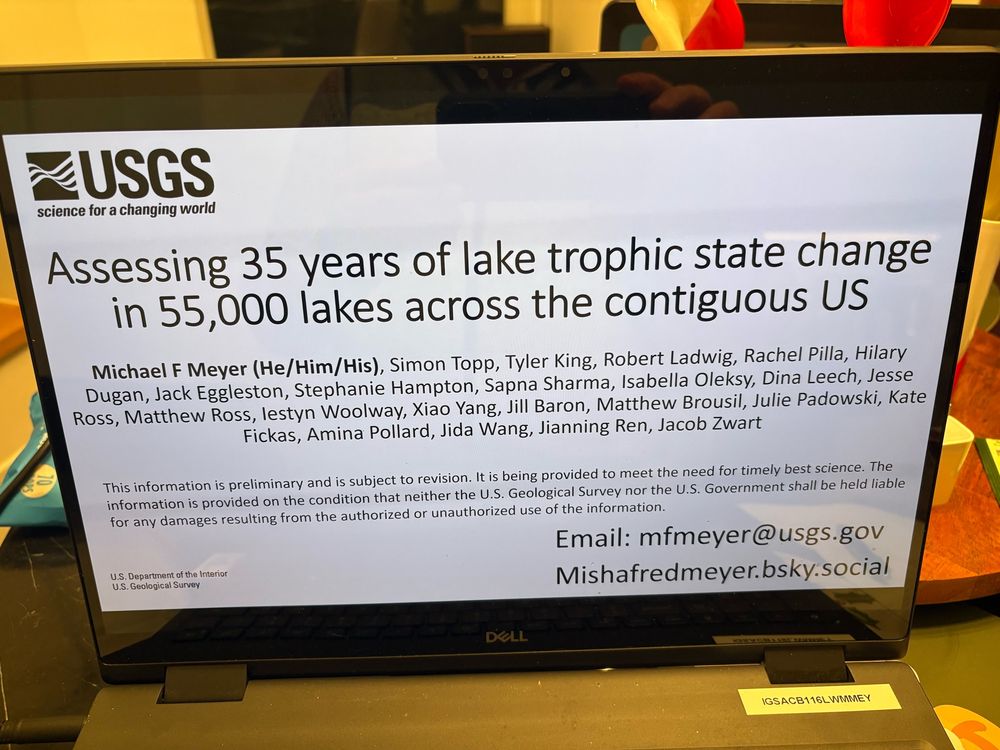
Michael Meyer
@mishafredmeyer.bsky.social
Research Limnologist at USGS | Prev @USGS Mendenhall Fellow @WSUPullman @NSF #GRFP @FulbrightPrgrm @SLU_Official | Co-founder, org-team member of @HackingLimno 🏳️🌈
Flashback to my first day at USGS when I took my oath of office four years ago.

October 25, 2025 at 2:59 PM
Flashback to my first day at USGS when I took my oath of office four years ago.
And we highlight how these varying classification schemes can dramatically impact other fields that might be using these limnological ideas, such remote sensing.

September 4, 2025 at 9:07 PM
And we highlight how these varying classification schemes can dramatically impact other fields that might be using these limnological ideas, such remote sensing.
We also looked at how our understanding of regional water quality can change when you apply different classification schemes at national scales.

September 4, 2025 at 9:05 PM
We also looked at how our understanding of regional water quality can change when you apply different classification schemes at national scales.
We recreated figures from Wetzel’s Limnology text to see how fundamental ideas, such as clinograde and orthograde Temperature and DO curves, shake out when you apply various trophic state classification schemes.

September 4, 2025 at 9:04 PM
We recreated figures from Wetzel’s Limnology text to see how fundamental ideas, such as clinograde and orthograde Temperature and DO curves, shake out when you apply various trophic state classification schemes.
And now onto the workshop with Carl Legleiter and Paul Kinzel on modeling river bathymetry with imagery collected from aircrafts! #HackingLimno #Limnology #Hydrology

July 22, 2025 at 3:09 PM
And now onto the workshop with Carl Legleiter and Paul Kinzel on modeling river bathymetry with imagery collected from aircrafts! #HackingLimno #Limnology #Hydrology
Day 2 of #HackingLimno starts with Brandon Overstreet from #USGS talking about how he uses various sources of remote sensing to understand river habitat in Oregon.

July 22, 2025 at 2:11 PM
Day 2 of #HackingLimno starts with Brandon Overstreet from #USGS talking about how he uses various sources of remote sensing to understand river habitat in Oregon.
What a great kick-off for #HackingLimno2025! Moving into the workshop focused on remote sensing of marine biodiversity with GBIF! Love seeing these ties between NOAA, GBIF, Google, and University of South Florida!

July 21, 2025 at 3:05 PM
What a great kick-off for #HackingLimno2025! Moving into the workshop focused on remote sensing of marine biodiversity with GBIF! Love seeing these ties between NOAA, GBIF, Google, and University of South Florida!
Really wonderful talk by Tim Stagnitta about how we’re making automated data pipelines in AWS to provide bias-corrected surface temperature data for >185k lakes & >75k rivers in CONUS 2013-present. Keep an 👁️ out for the data coming out soon!


December 12, 2024 at 4:40 PM
Really wonderful talk by Tim Stagnitta about how we’re making automated data pipelines in AWS to provide bias-corrected surface temperature data for >185k lakes & >75k rivers in CONUS 2013-present. Keep an 👁️ out for the data coming out soon!
Details on where and when for those interested in attending!

December 12, 2024 at 3:04 AM
Details on where and when for those interested in attending!
Tomorrow at #AGU24 Im talking on how & why lake trophic state might be changing nationally using Landsat, MERRA-2, MODIS, NADP, Invasive Species, and HydroLAKES, & EPA data. I might be on the stage, but this work stands on the shoulders of the observing systems tasked with collecting these data.

December 12, 2024 at 3:03 AM
Tomorrow at #AGU24 Im talking on how & why lake trophic state might be changing nationally using Landsat, MERRA-2, MODIS, NADP, Invasive Species, and HydroLAKES, & EPA data. I might be on the stage, but this work stands on the shoulders of the observing systems tasked with collecting these data.
Very excited to present at the US EPA NSTEPS program, which brings together scientists, managers, and end users from all corners of water science to talk about advances in how we monitor freshwater quality. Ready to share all things lakes, satellites, and ecology!

November 21, 2024 at 8:32 PM
Very excited to present at the US EPA NSTEPS program, which brings together scientists, managers, and end users from all corners of water science to talk about advances in how we monitor freshwater quality. Ready to share all things lakes, satellites, and ecology!
Very excited to be giving the final presentation as part of the UNITAR Water Academy talking about the products, power, and potential of satellites for tracking changes in the world’s freshwater! Many thanks to @sapnasharma.bsky.social for the invitation!

November 19, 2024 at 4:03 PM
Very excited to be giving the final presentation as part of the UNITAR Water Academy talking about the products, power, and potential of satellites for tracking changes in the world’s freshwater! Many thanks to @sapnasharma.bsky.social for the invitation!
We even resampled and re-ran the analysis 1,000 times to see the probability of getting our final results, and still (1) human development, (2) plant abundance, and (3) certain bee taxa were popping out as strong predictors.

December 18, 2023 at 4:27 PM
We even resampled and re-ran the analysis 1,000 times to see the probability of getting our final results, and still (1) human development, (2) plant abundance, and (3) certain bee taxa were popping out as strong predictors.
No matter how we modeled the data, % development AND plant abundance popped out as important variables.

December 18, 2023 at 4:27 PM
No matter how we modeled the data, % development AND plant abundance popped out as important variables.


